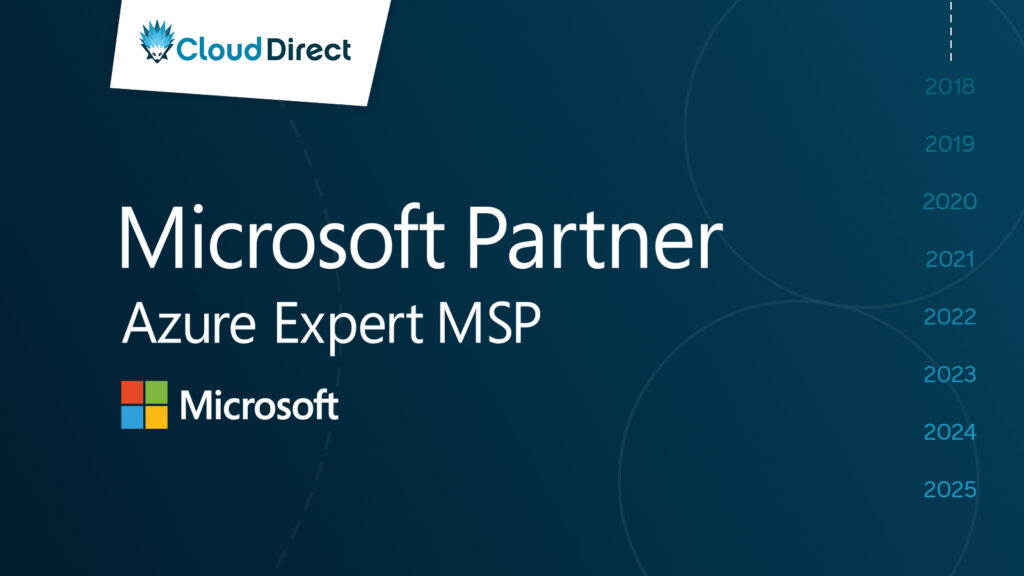
According to a recent study the Government’s Department for Digital, Culture, Media and Sport has run, two in five businesses reported having cybersecurity breaches or attacks in the last 12 months. Of these, one in five respectively ended up losing money, data or other assets. The most common attacks were phishing emails, followed by instances of others impersonating their organisation online, viruses or malware including ransomware.
With security breaches happening more frequently, it’s increasingly important that your business stays resilient. This doesn’t mean looking at short term security solutions – instead, you should be looking at creating a secure foundation for your business that helps you stay resilient. Thousands of businesses across the world, such as AI corporation, First Great Western and Mishcon De Reya are using Microsoft Azure to mitigate security threats. Microsoft has built Azure to provide a secure foundation, it comes with built-in security controls to help you quickly configure security, and has unique intelligence at cloud scale to help you safeguard data and respond to threats in real-time.
Here are four ways you can leverage Azure to transform security:
1. Azure protects your most valuable asset – data
We all know that data is most companies’ most valuable asset in 2021, making it vital you keep it secure. Azure can help you with this. Microsoft has created several tools that help you stop external sources accessing your information and data, such as; double encryption, Azure Firewall and Azure Information Protection (AIP). Let us explore how these three tools will enable you to protect your data.
Azure uses double encryption, which is when you have at least two layers of encryption to protect both your data at rest and data in transit. Using double encryption on your data will mean threats have to break through two barriers to access your information.
Then there’s Azure Firewall, a cloud-native network security to help protect your Azure Virtual Network resources. You’ll have intelligent filtering for your firewall, which in sort will deny traffic from any malicious IP address and domain sourced from the Microsoft Threat Intelligence feed. Azure Firewall will help you ensure that only the people you trust get access to your resources.
Finally, there’s Azure Information Protection (AIP) which enables you to better protect your sensitive information. AIP will help you better control and secure any emails, documents or other sensitive data that’s shared outside your organisation through classification labels and permissions.
2. Get your user and identity management on track
One of the easiest ways to maintain high levels of security within your organisation is to start with your employees. Make sure their accounts are protected to avoid hackers gaining access and ensure they only have access to what they need to avoid any accidental data theft or breaches. Using Azure will enable your business to gain better user and identity management with Role-Based Access Control (RBAC) and Multi-Factor Authentication (MFA).
Role-Based Access Control (RBAC) is when you assign Azure roles to control what access users have to different resources. Azure already comes with several built-in roles, but you’ll also have the ability to create your roles based on your organisation’s requirements – plus it will help you ensure employees only have access to the data they need. Once you’ve identified your roles, you then need to set out the Scope, which is essentially the resources that the role will have access to. You can add as many or as few resources as you’d like. Once you’ve mapped all of this out, you’ll have a list of roles with resources they can access, for example, the Virtual Machine Contributor role allows a user to create and manage virtual machines.
We then have Multi-Factor Authentication (MFA), which is a process where a user needs an additional form of identification when signing in, e.g. enter a code that was sent to their mobile or provide a fingerprint scan. Gone are the days when users would only use passwords to log in – it leaves you vulnerable for an attack if employees use a weak password. Doubling up on your authentication upon logging in will significantly reduce the risk of hackers accessing and compromising your employee’s accounts.
Enabling RBAC and MFA are quick wins to help you gain greater control of your users and what they can do.
3. Intelligent security monitoring
Microsoft has created their very own cloud-native Security Information and Events Management (SIEM), Azure Sentinel, that leverages Artificial Intelligence (AI) to proactively monitor and stop any threats before they harm your business. The SIEM will identify legitimate security threats with its built-on machine learning and knowledge. Meaning, you don’t have to spend hours reviewing which security threats are legitimate and not and instead can focus on doing what you do best.
One of the true benefits of Sentinel is that it’s continuously collecting data. Not just the odd bit here and there, but sheer amounts of data at scale across users, devices, applications and infrastructure. It’ll then use that data to detect threats and false threats using the data it’s collected, plus the threat intelligence Microsoft has.
Often, by the time you’ve identified a threat, it could be too late to respond. Not with Sentinel. Microsoft will allow you to rapidly respond to any threats with built-in automation of common task. For example, you could stop compromised users from moving around your network and stealing information through an automated, multifaceted response to incidents generated by rules that detect compromised users.
We’re hosting a webinar, Making Sense of Sentinel, that runs through all of the data Sentinel provides, and how you can start making sense of it. Sign up to discover how to leverage Sentinel’s data.
4. Make continuous improvements
Security threats don’t take breaks – they’re constantly evolving as hackers and technology are getting smarter. You must be actively improving your security to protect your business from these attacks. Trying to identify these improvements has been proven to be quite a challenge if you’re manually trying to identify them. If you’re looking for someone to help improve your security then look no further.
Microsoft is constantly looking out for your business by proactively identifying security improvements and recommendations with their Secure Score. The Secure Score will show your overall security posture as a percentage value, and to increase it you’ll be presented with a list of recommended actions to help raise your score. Each of the recommendations presented to you will include clear instructions for you to improve your security and the points your score will increase by.
As your Secure Score is displayed as a percentage, it’s easy to make this a regular KPI for you to improve – pushing your team to regularly review and implement the improvements suggested.
You can find out more about the tool in our Beginners Guide to Microsoft’s Secure Score.
Want to find out how Azure can help keep your business secure? Talk to the experts
As an Azure Expert MSP, it’s safe to say we know a thing or two about Azure. We have our very own in-house security experts to help you leverage the power of Azure to protect your business. Ready to find out how? Get in touch.






